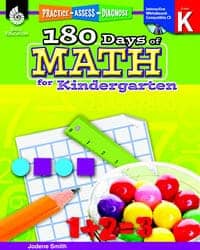By: Jodene Smith
It’s that time of year again—summer is over, and hopefully you had a chance to relax and refresh. Maybe you even took a vacation! But now it’s time to return to a schedule and focus your attention back to school. Along with the excitement of meeting your new set of students comes the reality of where they need to be academically by the end of the school year. And yes, it is you who must get them there! But don’t worry, take a deep breath, and follow these three principles for planning a wonderful and effective school year.
Use the Standards to Backwards Plan
Start with the end in mind. When you went on vacation, chances are you didn’t just jump in the car and start driving. Instead, you picked a destination and plotted your course. The same principle goes for teaching—know first where your students should arrive by the end of the year. Luckily, the standards tell you what your students need to know and be able to do by the end of the school year—they are your standards destination. And once you know the end, you can create the roadmap for getting there.
Provide Opportunities for Daily Practice
How do you learn to do anything new? By practicing! The funny thing about practicing is that it can’t be done by watching someone else—you have to do it yourself, and your students do too. The other funny thing about practicing is that it has to be done often. In fact, if you want to be good at something, it has to be done daily.
Providing opportunities for daily practice is a direct road to your standards destination. It helps students revisit old concepts, reinforces current concepts, and can even give a sneak peek at new concepts that are coming—making it easier for students to understand when the time comes. Although you may have had to practice piano for a half an hour every day when you were young, daily practice in school doesn’t have to take long; even five minutes a day can be effective!
Assess Along the Way
 So now you have your final destination (academic standards), and you have your roadmap (daily practice). But as you know, sometimes there are detours along the way. This is where assessment comes into play. Daily practice does not mean that students practice without any type of feedback—effective daily practice is assessed so that both the students and the teacher know how things are going. Hopefully, all is well on the road you are on, but assessment will show you that.
So now you have your final destination (academic standards), and you have your roadmap (daily practice). But as you know, sometimes there are detours along the way. This is where assessment comes into play. Daily practice does not mean that students practice without any type of feedback—effective daily practice is assessed so that both the students and the teacher know how things are going. Hopefully, all is well on the road you are on, but assessment will show you that.
Check in frequently to make sure you are still headed towards your standards destination. As you see the need, use other roads to reach your destination, such as re-teaching to the whole class, pulling a small group, providing extra practice, or reinforcing a concept with a read aloud to help students learn. The cool part of assessment tied to daily practice is that it is immediate; the detour can be short, and your students can get back on the road that will lead to where they need to go.
As you are headed back to school, you might not currently have a vacation destination, but you do have a wonderful opportunity to help students get to their standards destination.
Jodene Smith is a first grade teacher and has authored many standards-based resource books and readers for teachers and students, including books that help students get daily practice while providing the teacher with valuable assessment results, such as 180 Days of Math, 180 Days of High Frequency Words, and 180 Days of Reading, which are part of the 180 Days series.






Leave a Reply